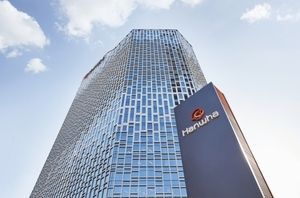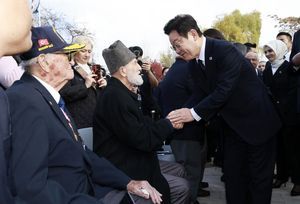
The South Korean military has officially begun mass production of laser air defense weapons capable of shooting down North Korean Unmanned Air Vehicles (UAV). Unlike conventional ammunition-based air defense weapons, if the power is sufficiently supplied, laser intercept weapons can accurately intercept multiple targets at the speed of light. Therefore, they are considered a game changer that could reshape future battlefields.
The Defense Acquisition Program Administration (DAPA) will hold a meeting on the 11th regarding the mass production launch of the Laser Air Defense Weapon Block-I at Hanwha Aerospace’s Daejeon campus.
Earlier last month, DAPA signed a contract with Hanwha Aerospace for the mass production of the first project of the Korean StarWars project, the Laser Air Defense Weapon Block-I.
The Laser Air Defense Weapon Block-I is a novel future weapon system that neutralizes targets by directly irradiating them with a light source laser generated from optical fibers. It can precisely strike small UAVs and multicopters at close range.
The laser is invisible and silent. It can be operated as long as there is an electricity supply, not necessitating individual ammunition. The cost per shot is only about $1.70.
If the output is increased in the future, it can also respond to aircraft and ballistic missiles. A DAPA official evaluated the laser air defense weapon as a “weapon system that can play the role of a game changer on future battlefields.”
The Laser Air Defense Weapon Block-I, which began in August 2019, invested a budget of about $73.7 million with the Agency for Defense Development (ADD). This led to the system development and Hanwha Aerospace’s participation as a prototype company.
The development proceeded smoothly through collaboration among civilians, the government, and the military, showing a 100% success rate in live-fire tests. It passed the combat suitability test in April last year and successfully developed the system. With this mass production contract, it will be transferred to the military this year and will be fully operational.
The military plans to carry out a key technology project to increase the output of the laser generator, a key component, to the level of several hundred kilowatts (kW). It also plans to develop the Laser Air Defense Weapon Block-II system, which has enhanced output and range compared to the current one.
The laser generator is a device that generates a laser beam, allowing the laser to aim at the target. Depending on the output, high-output lasers are expected to be able to intercept large UAVs, artillery shells, and subsonic (slightly slower than the speed of sound) guided missiles.
Head of the Guided Weapon Project Group at DAPA Lee Dong Seok said, “By signing a mass production contract for the Laser Air Defense Weapon Block-I, South Korea becomes the world’s first leading country to deploy and operate laser weapons in the military,” adding, “This will further strengthen the military’s ability to respond to North Korean UAV provocations.”










Most Commented